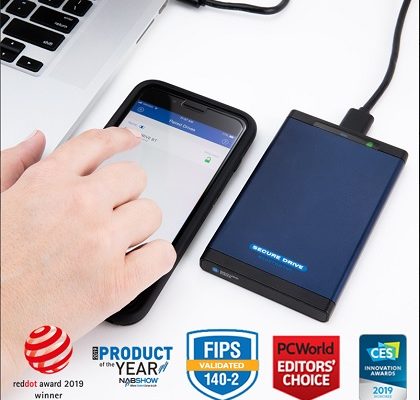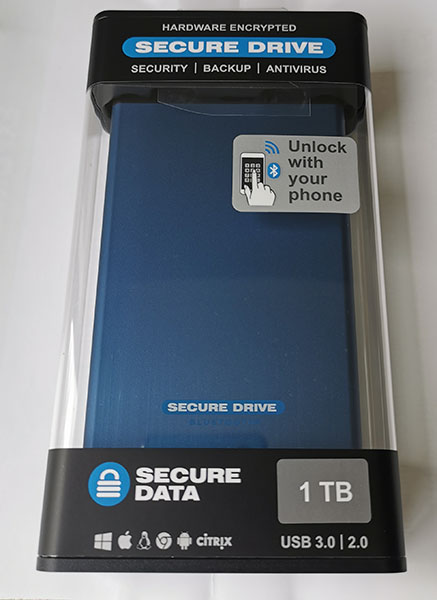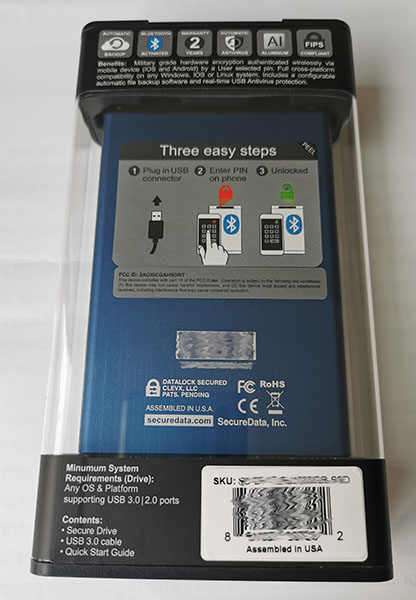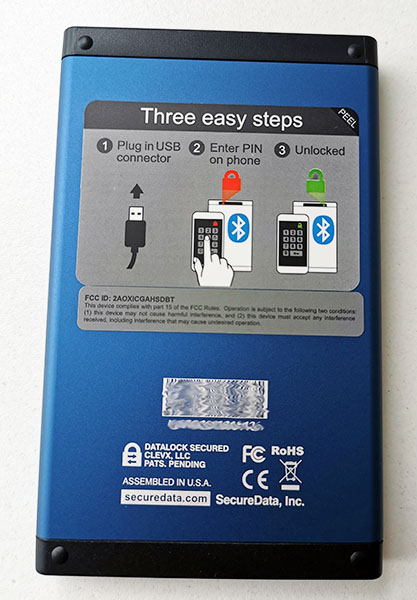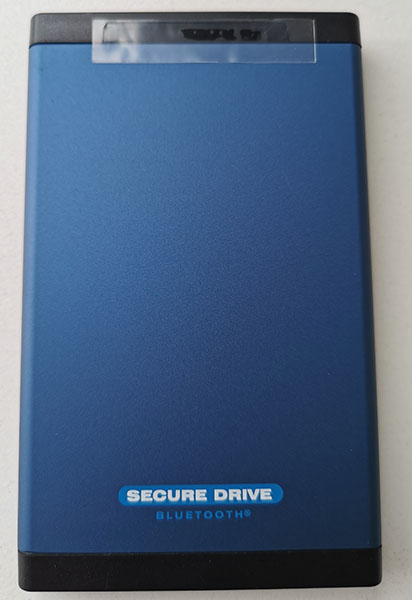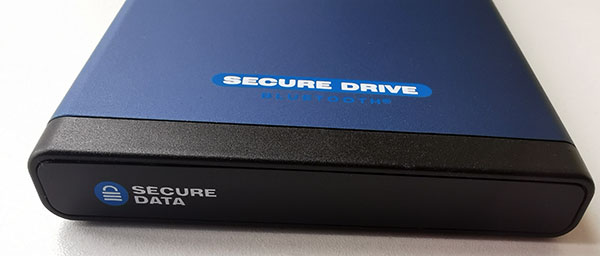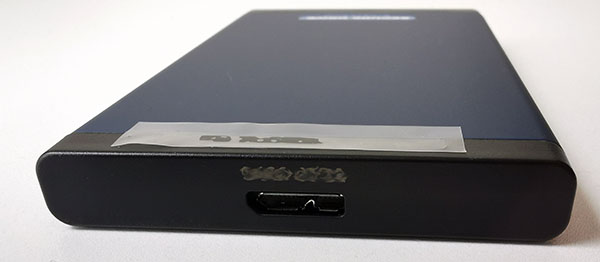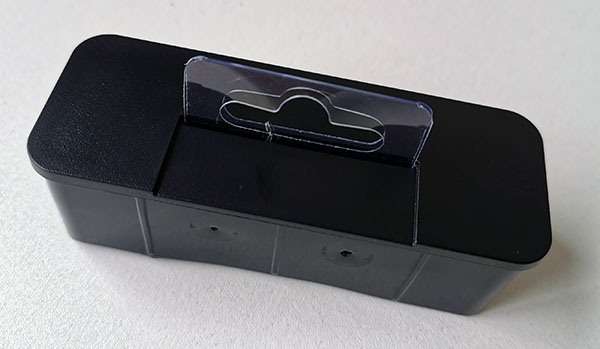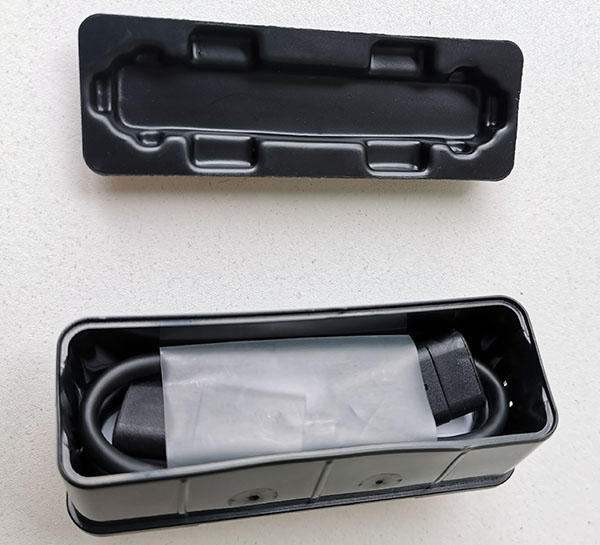SecureDrive® BT – Hardware Encrypted External Portable Drive
SecureDrive® BT – Closer look
The SecureDrive BT is shipped in a clear plastic box which is surrounded by product branding around the package.
The cover has a security seal around it to ensure tamper protection and you can refuse delivery if the seal has been tampered with.
Opening up the box, you slide out the drive. We’re looking at the 1TB SSD version of the SecureDrive BT and the drive is not bulky by any means; a trait not often seen in similar devices. With dimensions of 1.25cm thickness, 12.5cm length and 7.7cm wide the SecureDrive BT is designed with portability in mind. The drive is enclosed in an aluminum casing and a tough epoxy layer protecting the drive’s electronics. Any attempt to open the enclosure by brute force will render the drive useless.
A key highlight of the SecureDrive BT is that there’s no alpha numeric keypad that we generally see in competing products. The drive is unlocked wirelessly through a mobile app that’s installed on your phone. We’ll discuss this in detail later, but it’s certainly a significant improvement from its competition.
The drive is USB 3.0/3.1 capable. The USB cable is neatly hidden away inside the top cover of the plastic box. Inside you also find a setup guide to get you started. If there was one improvement I’d like to see in a future release is for the drive to have a permanent USB connection which can be secured onto the drive enclosure. More often than not, users tend to loose these USB cables at the most critical of times (me included!!!).
There’s 3 LED indicators to show when the drive is active/locked and powered on. A quick setup instructions sticker is pasted on the drive as well to help users who can’t be fussed reading instruction manuals.
That pretty much sums up the physical characteristics of the SecureDrive BT; lets now look at the capabilities of the drive and improvements made against its competition.
| Table of contents |
| 1. Introduction |
| 2. SecureDrive® BT – Closer look |
| 3. SecureDrive® BT – Capabilities |
| 4. Remote Management Features |
| 5. Performance and Conclusion |
